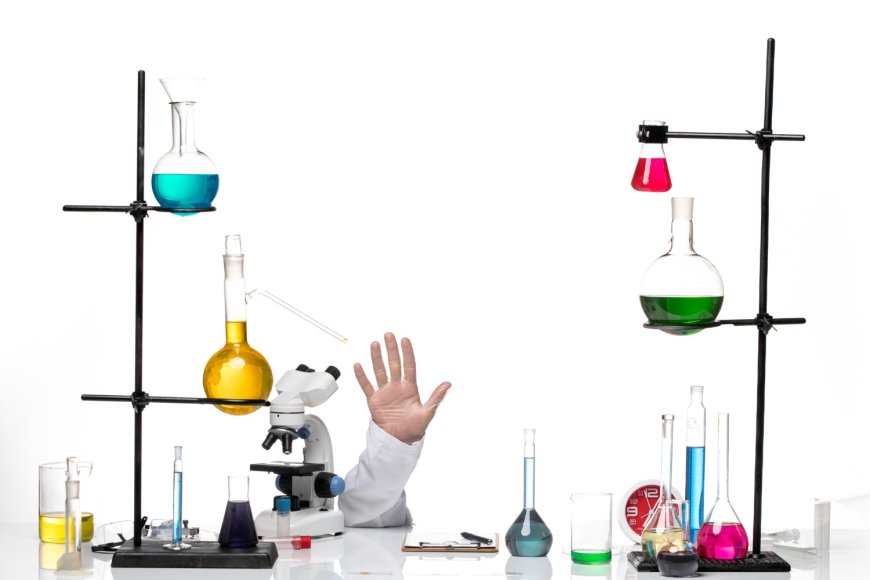Boosting Filtration Precision with Clamp Extensions and Membrane Filtration Assembly
Learn how clamp extensions enhance the stability and precision of membrane filtration assembly, improving filtration accuracy in laboratory experiments.

In the world of laboratory experiments, achieving high levels of precision and accuracy is essential. Whether you’re working in microbiology, environmental science, or chemical engineering, filtration techniques are often at the core of many experimental setups. One such method that plays a critical role in maintaining the purity and quality of your samples is membrane filtration assembly. Paired with clamp extensions, this setup can dramatically improve the precision of your filtration processes. In this guide, we’ll explore how these two tools work together to enhance the quality of your experiments.
What is Membrane Filtration Assembly?
Membrane filtration assembly is a laboratory technique used to separate particles from liquids or gases using a semi-permeable membrane. The membrane allows certain molecules, such as water or smaller ions, to pass through while trapping larger particles, such as bacteria, debris, or other contaminants. This method is widely used in various fields, including water purification, microbiological analysis, and pharmaceutical production.
The assembly typically consists of a filtration unit, a membrane filter, and a vacuum or pressure system to drive the filtration process. The goal of the membrane filtration assembly is to isolate specific components from the sample with maximum efficiency and minimal loss of valuable data or materials.
The Role of Clamp Extensions in Filtration Processes
When setting up a membrane filtration assembly, ensuring the proper positioning and stability of the components is crucial to achieving accurate and consistent results. This is where clamp extensions come into play. Clamp extensions are designed to securely hold laboratory apparatus in place, ensuring that the membrane filtration assembly operates under optimal conditions.
These extensions are particularly useful in larger filtration setups where standard clamps may not offer enough reach or support. By using clamp extensions, you can secure various parts of the filtration apparatus, including flasks, funnels, or filtration chambers, ensuring that everything stays aligned during the filtration process. This alignment is key for maximizing the effectiveness of the filtration and ensuring that your samples are handled with care and precision.
How Clamp Extensions Improve Filtration Precision
The addition of clamp extensions to your membrane filtration assembly setup can boost precision in several ways:
-
Stability and Secure Holding: One of the main advantages of clamp extensions is their ability to stabilize equipment during the filtration process. With additional length and flexibility, clamp extensions allow for better positioning of your filtration apparatus, reducing the chances of movement or vibration that could affect the accuracy of the filtration process.
-
Enhanced Alignment: Correct alignment of the filtration unit is crucial for efficient filtration. Clamp extensions help position your components in a way that maintains even flow and minimizes errors caused by misalignment.
-
Greater Reach: In complex filtration systems, where multiple components are used, clamp extensions provide the necessary reach to secure distant or hard-to-reach parts. This flexibility allows you to set up the membrane filtration assembly in larger lab spaces or when handling multiple filters simultaneously.
-
Increased Safety: Filtration often involves the use of high pressures or vacuum systems. By securing the filtration components with clamp extensions, you reduce the risk of accidents such as spills or breakage, which is especially important when dealing with delicate samples or hazardous materials.
Achieving Optimal Filtration Results with Proper Setup
For a successful filtration process, the precision of the membrane filtration assembly depends heavily on the correct positioning and stability of all components. A membrane filtration assembly setup that is improperly clamped or misaligned can result in incomplete filtration, contamination, or even damage to the filter itself. By incorporating clamp extensions into your workflow, you ensure that the apparatus remains secure and in optimal position throughout the entire process.
Additionally, clamp extensions can make the filtration setup more ergonomic, especially when dealing with larger volumes or extended filtration times. Researchers can easily adjust the height and position of their equipment without needing to constantly reposition clamps or worry about instability, allowing for more efficient and effective filtration.
Conclusion
In the lab, achieving high precision and reliability is essential for meaningful results, especially when working with filtration techniques like membrane filtration assembly. By using clamp extensions to stabilize and position your filtration components, you can enhance the accuracy of the process and improve the overall quality of your experiments. With these two tools working together, you’ll be able to achieve optimal filtration results, ensuring that your samples are treated with the care and precision they deserve. Whether you’re a microbiologist, chemist, or environmental scientist, integrating clamp extensions and membrane filtration assembly into your lab setup will enhance your ability to produce reliable and reproducible data.
What's Your Reaction?















![[123Mov????????s.hD ] Pengantin Iblis (2024) Full Mov???????? ????ree Dow????load 10????0p, 7????0p, 4????0p](https://news.bangboxonline.com/uploads/images/202502/image_430x256_67a7cc77316b2.jpg)



